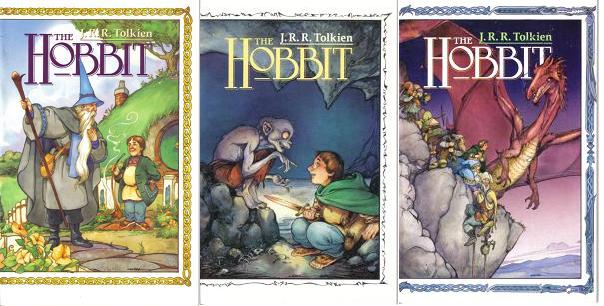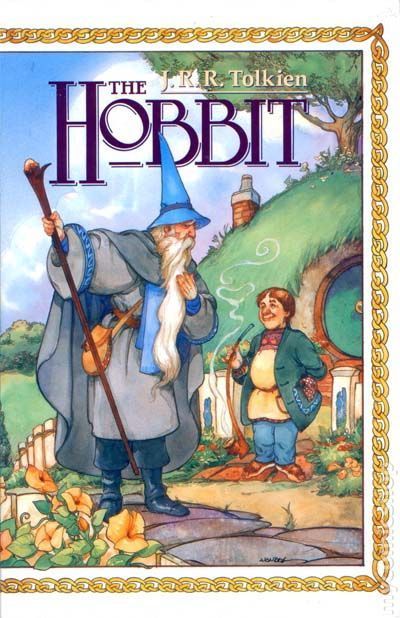In 1989 Eclipse Comics (under the rubric of “Eclipse Books”) published a 3-part adaption of The Hobbit, with script adapted by Charles Dixon (then working for Marvel on titles such as Alien Legion and Marc Spector: Moon Knight) and illustrations by David Wenzel (who like Dixon had worked on Savage Sword of Conan, and had also been recognized for his work on Avengers). Tolkien’s original publisher Unwin released a one-volume edition in 1990, which Del Rey reprinted in 2001 with a new cover by Magic: The Gathering illustrator Donato Giancola.
I eagerly purchased the first issue of the Eclipse adaptation when it hit the stands, since The Hobbit has been my favorite fiction book since I was 7 years old. Regrettably, I was not as enthused about the comic book adaptation.
The greatest flaw was the art. For some reason Wenzel chose to draw Bilbo with a combination of a Beatles moptop and a nose that looks like Jimmy Durante went drinking with W.C. Fields. The coloring is generally characterized by stark brights with little sense of shading. When shading is attempted, as in the Goblintown scenes, the darks often look smudged. The overall effect gave the look a cartoonish feel that lacked seriousness in the scenes that needed it, and diminished the emotional impact of the story.
Still, the underlying story is a great story, redeeming the art somewhat. But there were problems adapting Tolkien’s material here as well. Dixon stuck closely to Tolkien’s original wording, which is understandable in that one does not tamper with Tolkien’s prose, but unfortunately this had the effect of trying to cram too much lettering into each panel, forcing a tiny font on the story. A more experienced fantasy writer like Roy Thomas could probably have done better with distilling Tolkien’s material into something that preserved the original sense while still fitting the comic format.
My evaluation is that this adaptation is of interest to avid Tolkien collectors like me and worth having to complete one’s collection, but it does not do justice to the story, and there is room for a visually more compelling treatment of The Hobbit that does a better job of adapting Tolkien’s prose to the spatial limitations of the medium. Hopefully the new film will spur a graphic novel publisher to produce a new adaptation.

